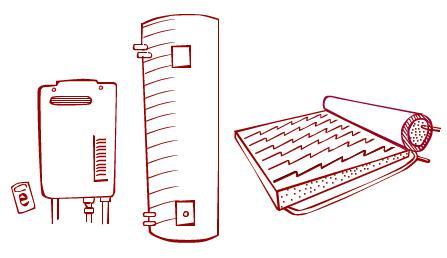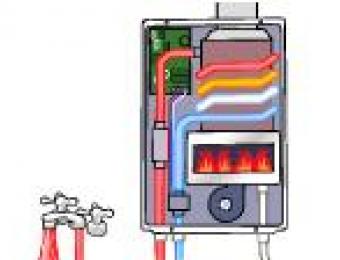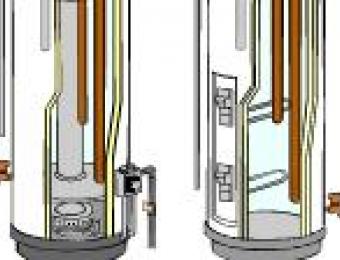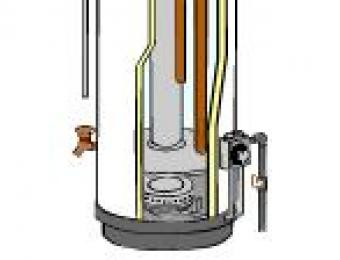To work out whether a hot water system suits your purposes you need to consider a few issues. The first involves determining what size and heating capacity you need. There are different things to look for when comparing a storage tank water heater with a continuous flow one but both depend on how much water you expect your household to use at maximum demand. Likewise, when considering a solar hot water system, the demand for hot water will dictate how big your collector area needs to be.
What to look for in a storage tank system

There are two main things to look for in a storage tank system; the volume of the tank, and the capacity of water it can deliver when you need it most.
The tank’s volume does not need to be the same as how much it can deliver at once. For example, if you have a 50 litre (L) tank and use 75L per day, you might assume that your tank would be too small. If that 75L consists of using 25L of water 3 times throughout the day though, the tank is in excess of what you require.
Bigger tanks take more energy to heat, so enhancements like thicker tank insulation help to ensure that the burner or element is not working too hard to keep water hot when you’re not using it. Don’t be fooled into thinking that it’s as simple as saying that a smaller tank will consume less power, though. Always check the energy efficiency rating and install the system with the highest star rating you can find and afford.
As a rough guide, estimate for around 30-40L per person in the household for a gas tank storage system and 55-60L for electric. You are the best judge of how much hot water your house needs, and a good system is an important investment so don’t feel pressured into a rush decision.
What to look for in a continuous flow system
Because a continuous flow system supplies hot water on demand and the hot water is endless, the most important thing to consider for these water heaters is flow rate. In practical terms, this determines how many hot water outlets the system can reliably supply with hot water to at once.
To calculate the flow rate you’ll need, think about how many outlets might possibly be used at once. Starting with the first outlet you can see being used, grab a large bucket and a stopwatch, turn the hot tap on full (or as high as it would usually be used) and work out how much water has passed through in one minute. Write this down and move on to the next hot water outlet. It shouldn’t take very long and once you’re done, you can add up the totals. The result is roughly what you will use in litres per minute (L/min) at peak demand times in your house.
In researching continuous flow systems you will likely see that the options for gas systems outstrip those of electric systems. Gas systems simply take less time to get the water to the right temperature, and produce fewer greenhouse emissions (CO2) while doing so. They are capable of supporting a higher number of outlets, and some of the highest capacity industrial hot water systems are gas continuous flow systems.
Solar demand
In short, the more demand there is for hot water in your house, the greater the need is to heat water. As a rule of thumb, households with a higher demand for hot water will need to install more (or larger) solar collector panels or evacuated tubes on the roof. Split systems, which store the hot water in an external tank, are generally favoured over thermosiphon systems for households with a bigger demand for hot water.
Requirements for electric storage hot water systems
| Off-peak | Peak rate | ||
|---|---|---|---|
| Number of people | Capacity (Litres) | Number of people | Capacity (Litres) |
| 1-3 | 160 | 1 | 25 |
| 2-4 | 250 | 1-2 | 50 |
| 3-6 | 315 | 2-3 | 80 |
| 5-8 | 400 | 3-5 | 125 |
| SOURCE: Choosing a hot water system, Sustainable Energy Authority Victoria, 2002 | |||
Requirements for natural gas and LPG hot water systems
| Tank storage | Continuous flow | ||
|---|---|---|---|
| Number of people | Capacity (Litres) | Number of outlets at one time |
Flow rate (Litres/minute) |
| 1-3 | 90 | 1 | 16 |
| 2-4 | 130 | 2 | 20 |
| 3-5 | 170 | 2-3 | 24 |
| 4-6 | 200 | 3+ | 32 |
| 5-9 | 260 | ||
| SOURCE: Choosing a hot water system, Sustainable Energy Authority Victoria, 2002 | |||
Requirements for solar hot water systems
| Number of people | Hot water required (Litres per day) |
Approximate tank size | Collector area (m2) |
|---|---|---|---|
| 1-2 | 120 | 180 | 2 |
| 3-4 | 200 | 300 | 4 |
| 5-6 | 300 | 440 | 6 |
| SOURCE: Choosing a hot water system, Sustainable Energy Authority Victoria, 2002 | |||




